If you Google “pancake recipe,” the first search result, for the past couple of months at least, is this one from Allrecipes.
The flour-milk-egg ratio of that recipe produces batter with the consistency of molasses, and, try as I might, I’ve been unable to get pancakes made with that recipe to be anything other than burnt, raw on the inside, or both.
Two nights ago, lacking other options, I decided to make crepes for supper, and I figured that crepes are really just thin pancakes, so I freestyled a recipe, using a cup of flour, a single egg, and considerably more milk than that pancake recipe calls for. The batter was the consistency of motor oil. And the resulting neo-pancakes were thin, cooked right through, and as different from the disastrous pancakes of yore as to be an entirely new species. With a little bit of dried basil added to the batter, and some of Paul Offer’s mushrooms fried up and placed on top, the result was very tasty.
So much so that I switched out cinnamon for basil this morning and we had blueberry pancakes from the same ad hoc recipe.
From an October profile of Gavin Newsom in The New Yorker:
Newsom gazed up into the building’s marble dome. Did he get smaller, or did the problems get bigger? You enter politics to change lives, and you end up hoping just to save your own. “I always imagined what it would be like to leave this office,” he said. “I thought it would be powerful, but the minute I swore in Ed Lee as the next mayor, literally seconds later, every reporter is running toward Ed Lee, every staffer is running toward him, and I remember walking down these stairs alone. Ed never called me, my staff didn’t call me—nobody. All that energy, over in a nanosecond.” He shivered, draped his jacket over his shoulder, and loped downstairs to the S.U.V. waiting to speed him on his way to being the future ex-governor of California.
Tuesday’s election say 7 members of Executive Council lose their seats: Paula Biggar, Jordan Brown, Richard Brown, Tina Mundy, Pat Murphy, Chris Palmer and Wade MacLauchlan, and I expect they’re all going through variations of what Newsom experienced.
These are people who, under Tuesday, were called “Minister” by their employees and were responsible for significant budgets and policies. Today they are civilians, responsible for getting their summer tires put on.
While I’m sure they’ll all do okay in life, it wouldn’t hurt to drop them a line today to thank them for their service, especially if their service touched you, your family, or your community in a particularly significant way.
The video for Taylor Swift’s ME! is a stunning visual tour de force that demands watching and rewatching. The effort expended on small details that are on screen for only a second or two is boggling.
The song itself is catchy, and has a great hook in “I’m the only one of me, baby that’s the fun of me.”
But the rest of the lyrics—“And you can’t spell ‘awesome’ without me,” “I know that I went psycho on the phone, I never leave well enough alone,” and even the “you’re the only one of you, baby, that’s the fun of you” corollary—seem lazy and made up on the fly.
I would happily trade half the visual razzmatazz for some effort to craft more cogent lyrics.
Here’s how the final mark will be calculated for Oliver’s high school course History and Styles of Popular Music.
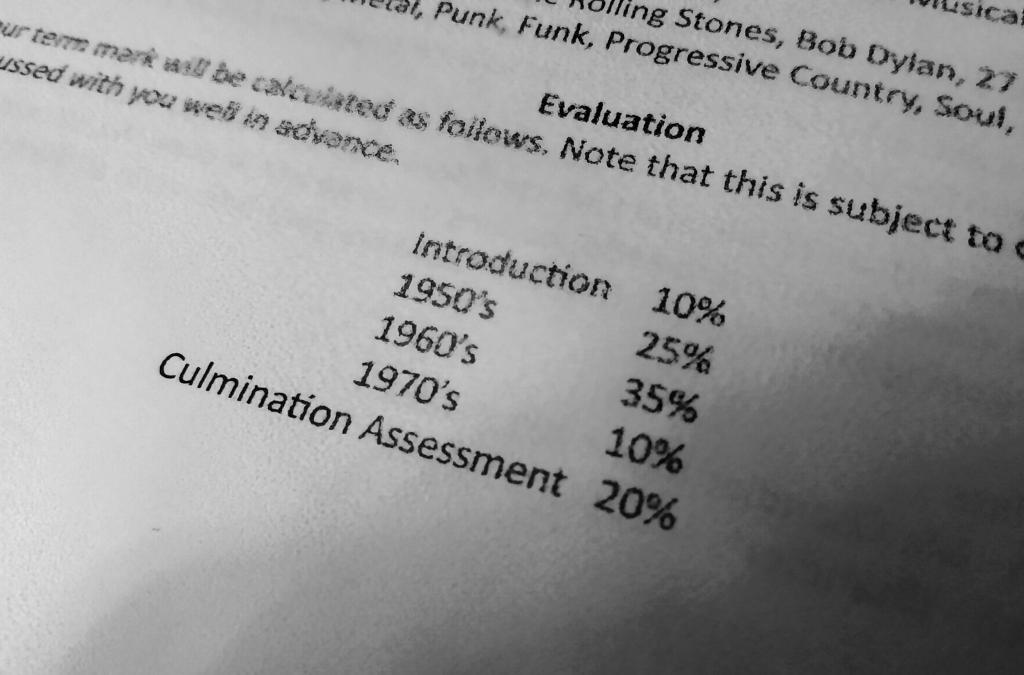
In a piece in this morning’s Guardian, Charlie Hancock writes, in part, about what a meltdown is like:
This is what it’s like. To be autistic is to live in a world where everything is too loud, too smelly and too bright, populated by people who say one thing and get angry when you fail to realise that they really meant something different. At the same time, your brain is struggling to keep track of and process the stimuli constantly bombarding it. Your brain and body then shut down and go into overdrive at the same time. Adrenaline courses through your veins. You are swallowed in a cloud of panic and cannot help but scream and sometimes lash out at others or even yourself.
But then, almost as soon as the meltdown erupts, it is over, and you are left with a mixture of exhaustion and intense shame. It can take days for the burnout to dissipate, but the shame is far longer lasting. It can colour the way that people see you and treat you.
Conservative Leader (and possible Premier) Dennis King was quoted in The Guardian this morning on the carbon tax:
“We understand the premise, that if you put a price on carbon, it is to encourage people to change their habits. The challenge we have here is we don’t have any other options other than to drive.”
Mr. King lives in Hunter River.
There are two buses a day that travel from Hunter River to Charlottetown, one at 7:15 a.m. and one at 8:14 a.m. They pick up at Central Queens Elementary School.
There are two buses back from town to Hunter River, one at 4:20 p.m. and one at 5:30 p.m., leaving from Confederation Centre of the Arts.
The trip takes about 30 minutes each way, which is about the same time it would take to drive a private car. There is WiFi on the buses.
So there are “other options other than to drive,” at least for him.
And if the limited schedule of two buses in and two buses out per day is not sufficiently convenient for Mr. King’s commute, he is in the lucky position, as a new legislator, of being able to do something about that.
When I planted our Karla Bernard campaign sign in the front garden 10 days ago, it was still decidedly winter-like on PEI.
This morning, the morning after the election where Karla won her seat, the front garden is filled with the signs of a green spring:
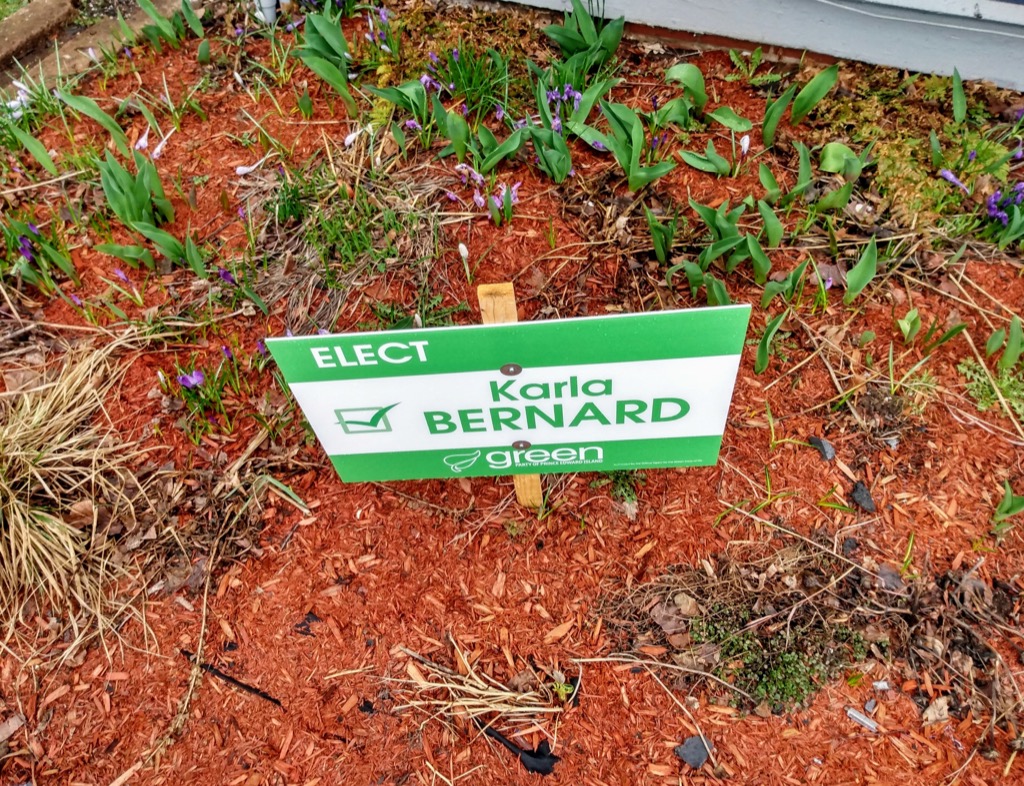
Elections PEI published results of yesterday’s provincial general election as a collection of HTML tables, which are not well-suited when you’re looking for machine-readable data to do interesting things with. Things like this visualization of the winners of each poll:
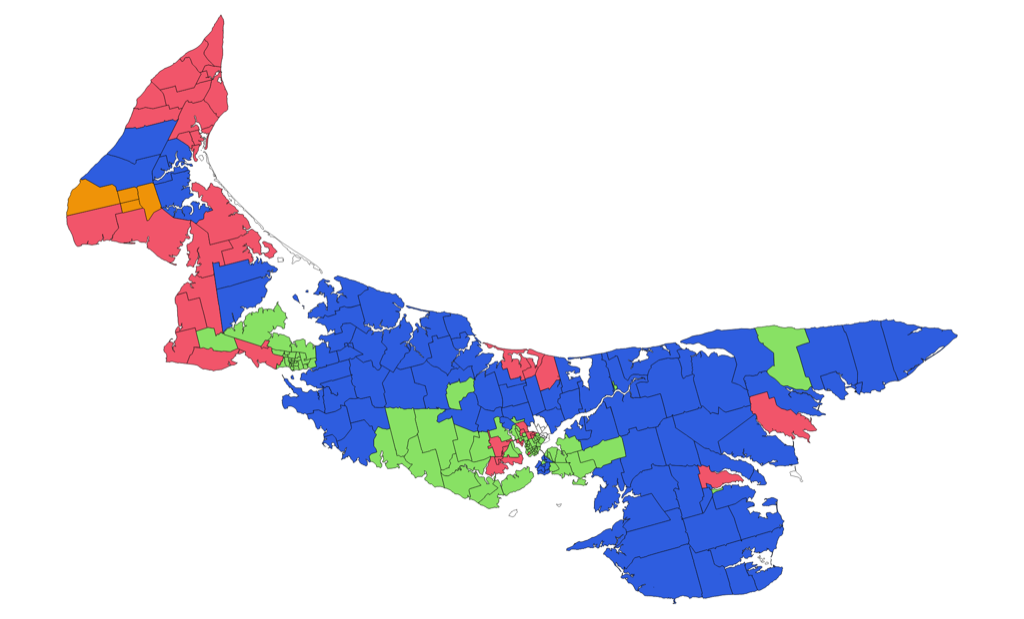
Or this visualization of the party that came second place in every poll:
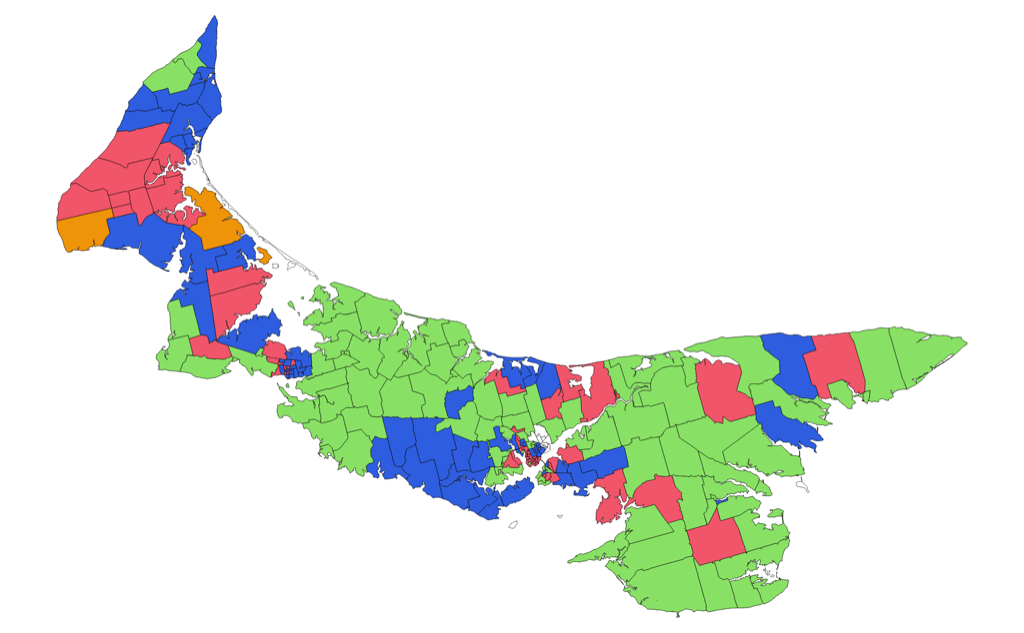
Or this visualization of polls where Green candidates came first or second:
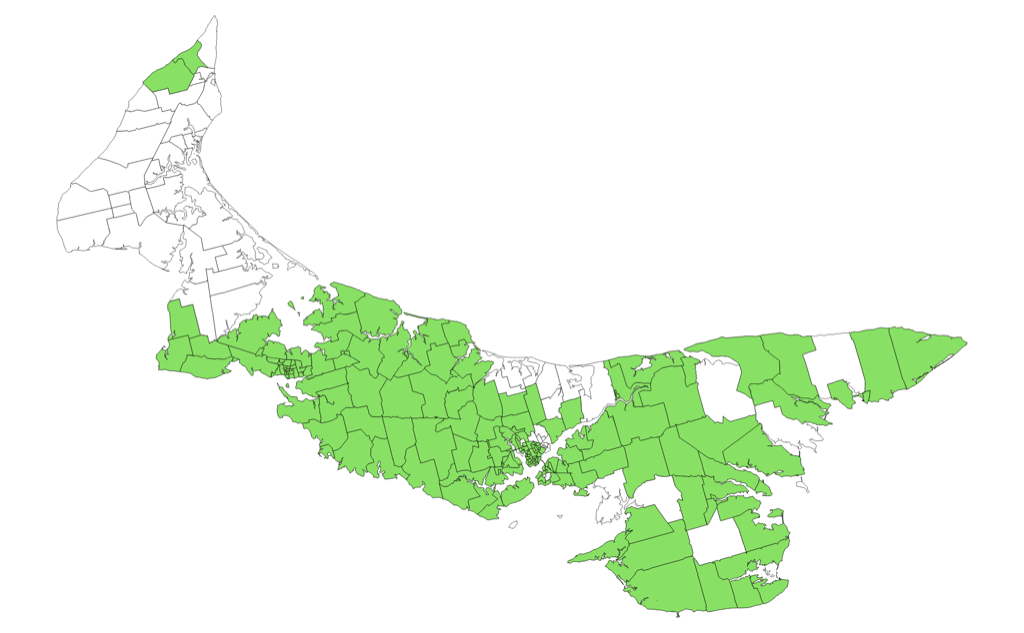
Fortunately, HTML tables are sort of machine-readable to start, and it doesn’t table much to parse them and turn them into something even more machine-readable.
So this morning I wrote some code to do exactly that, and you can download it and take it for a ride or, if you’re just looking for the data itself you can grab one of two files:
- pei-election-results.json is a JSON file of all of the results for each district of each poll.
- pei-election-poll-winners.csv is a CSV file of only the winners of each poll.
It’s that “winners” file that I used to create the visualization above, which you can explore in an interactive version that I’ve just published to the QGIS Cloud.
I combined the CSV file with the Electoral Districts GIS layer. To be able to do this I first needed to create “virtual field” called “distpoll” in the Electoral Districts layer:
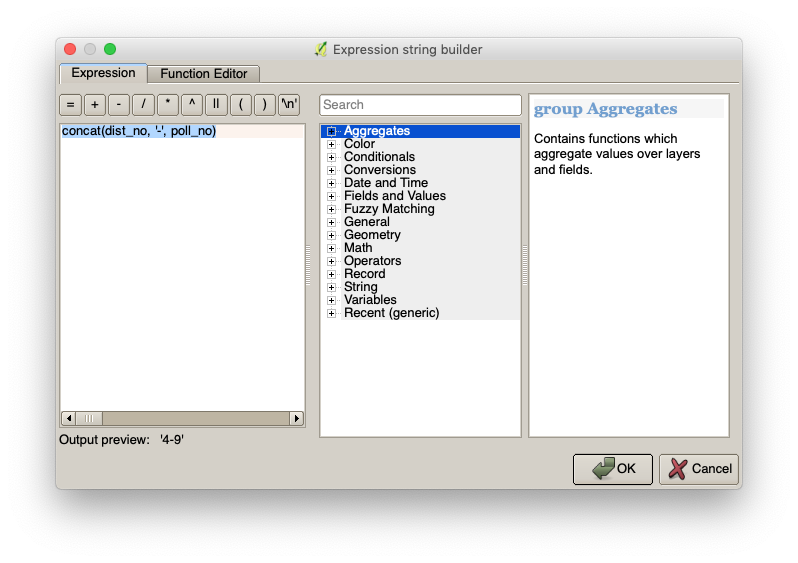
With that virtual field in place, I could join the winners CSV file to the Electoral Districts layer, using the “distpoll” field for the join:
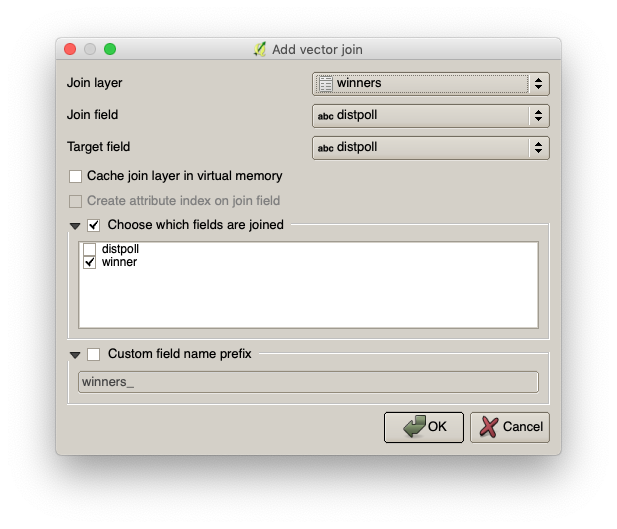
And with the files joined, I used “rule-based” styles in QGIS to colour-code each poll by the winner (leaving those polls with no winner–those in District 9 in this case, where the election was delayed–white):
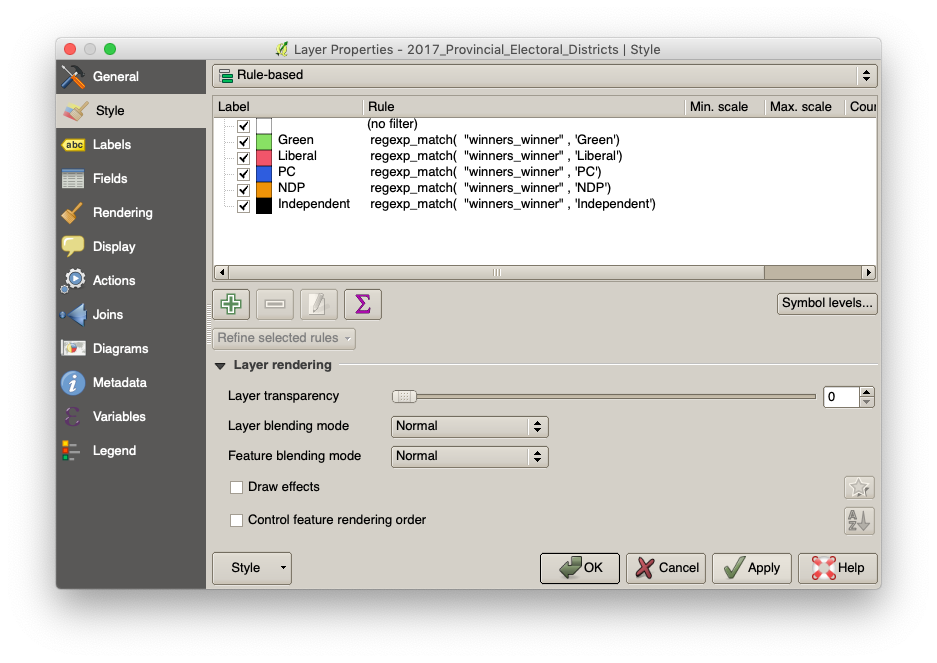
I’m hopeful that others can build on this code to make additional interesting things from the results.
Karla Bernard is our new Green MLA for District 12, in a Green Official Opposition. We are very, very happy.
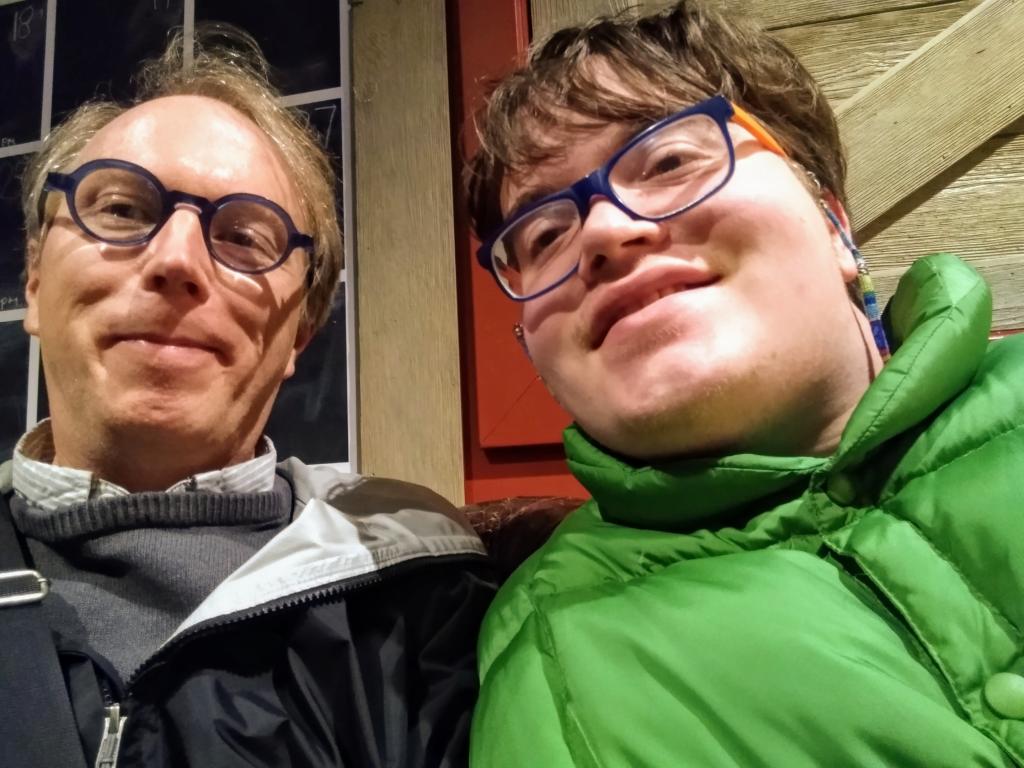
I took screen shots of the four political party websites this morning–polling day–for posterity.
 |
 |
 |
 |
 I am
I am